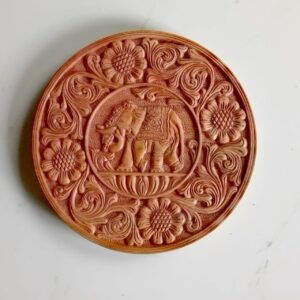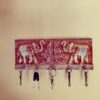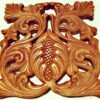No products in the cart.
Return To ShopOops, looks that mega-menu was not imported correctly. Go to Appearance > Menus > edit menu and use the 8theme menu options to select the Static Block for this menu item and show the mega-menu content
Oops, looks that mega-menu was not imported correctly. Go to Appearance > Menus > edit menu and use the 8theme menu options to select the Static Block for this menu item and show the mega-menu content
Oops, looks that mega-menu was not imported correctly. Go to Appearance > Menus > edit menu and use the 8theme menu options to select the Static Block for this menu item and show the mega-menu content
Oops, looks that mega-menu was not imported correctly. Go to Appearance > Menus > edit menu and use the 8theme menu options to select the Static Block for this menu item and show the mega-menu content
No products in the cart.
Return To Shop$70.00 Original price was: $70.00.$60.00Current price is: $60.00.
Sri Lankan Traditional Wood Carving.
Size: 15″ x 15″.
Weight: 1500g
Made Out Of Mahogany Wood.
Handicraft of woodcarving in Sri Lanka has a long history. The tradition of woodcarving in Sri Lanka is visible at Lankatilaka Temple and Ambakka Devale at Kandy. At these temples, miniature replicas of the low-relief wood carving done by the traditional woodcarvers can be bought at fair prices. The three dimensional carvings of ebony Elephants, Buddha are popular in Sri Lanka. Wood-carved decorative panels are used widely in Sri Lanka in the trade of interior decoration too. A wide range of handicraft items made of wood combine utility and beauty adding elegance to your lifestyle, such as wall hangings, fancy jewellery, figurines, sculpture, lacquer products, gift boxes, toys, educational items for pre-school children, household items are some of the woodcraft items produced in Sri Lanka. Wood carving is a form of working wood by means of a cutting tool (knife) in one hand or a chisel by two hands or with one hand on a chisel and one hand on a mallet, resulting in a wooden figure or figurine, or in the sculptural ornamentation of a wooden object. The phrase may also refer to the finished product, from individual sculptures to hand-worked mouldings composing part of a tracery. The making of sculpture in wood has been extremely widely practiced but survives much less well than the other main materials such as stone and bronze, as it is vulnerable to decay, insect damage, and fire. It therefore forms an important hidden element in the art history of many cultures.Outdoor wood sculptures do not last long in most parts of the world, so that we have little idea how the totem pole tradition developed. Many of the most important sculptures of China and Japan in particular are in wood, and the great majority of African sculpture and that of Oceania and other regions. Wood is light and can take very fine detail so it is highly suitable for masks and other sculpture intended to be worn or carried. It is also much easier to work than stone. Some of the finest extant examples of early European wood carving are from the Middle Ages in Germany, Russia, Italy and France, where the typical themes of that era were Christian iconography. In England, many complete examples remain from the 16th and 17th century, where oak was the preferred medium.

| Weight | 2 kg |
|---|---|
| Dimensions | 15 × 15 cm |
There are no inquiries yet.
You must be logged in to post a review.


DHL Shipping Worldwide

Guaranteed Money Back in 7 days return.

3 Day Returns in case u change your mind.
$12.00 Original price was: $12.00.$10.00Current price is: $10.00.


$18.00 Original price was: $18.00.$16.00Current price is: $16.00.
Reviews
There are no reviews yet.